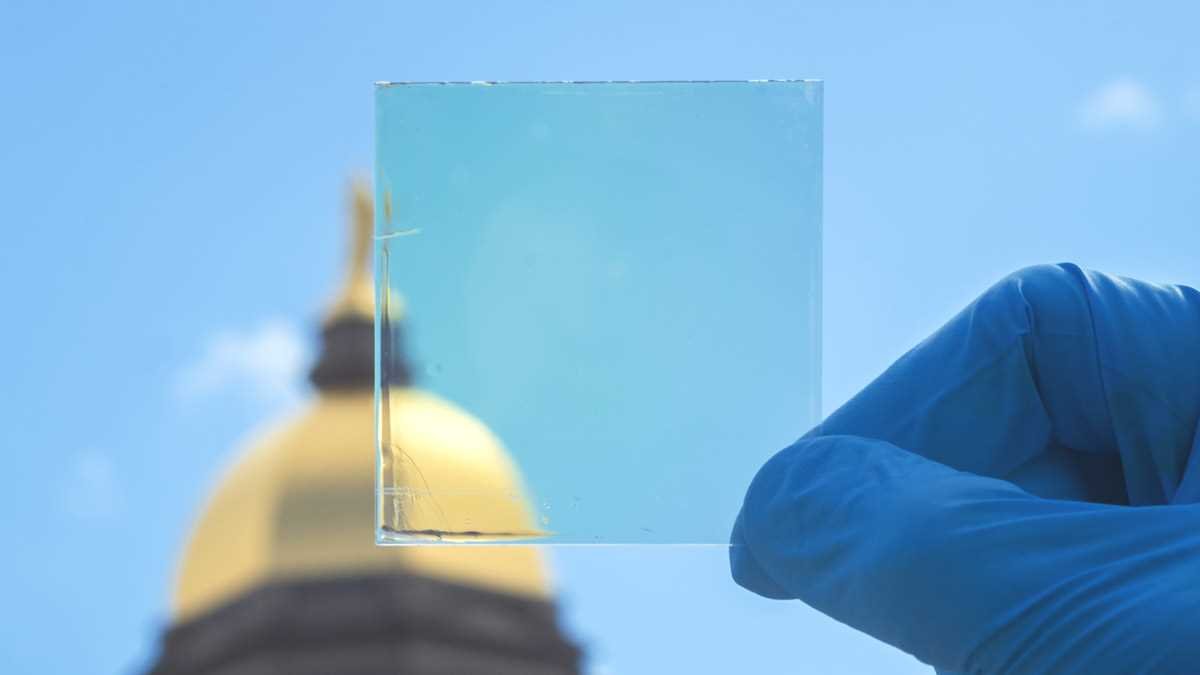Scientists say they have created an experimental new high-tech window coating that works similarly to polarized lenses on sunglasses by allowing all of the visible light through while also reflecting unwanted heat. If added to existing buildings and car windows, the new coating could reduce internal temperatures in hotter climates without sacrificing any of the visible light while also reducing energy usage for indoor air conditioning by as much as 30%.
The new coating was developed by researchers from Notre Dame University who were looking for a cheap yet viable way to reduce the use of air conditioning in cars and buildings without sacrificing any of the visible light like happens with tinted windows. The key, they determined, was finding a way to reflect away both the ultraviolet and infrared light waves that can generate heat while allowing the full spectrum of visible light to pass through the windows unimpeded.
To accomplish this lofty goal, University of Notre Dame Professor for Energy Studies Tengfei Luo and his postdoctoral associate Seongmin Kim covered a glass base with ultra-thin layers of silica, alumina, and titanium oxide. Together, those materials would block infrared and ultraviolet light before it penetrates the building’s interior.
Next, Luo and Kim added an additional layer of micrometer-thick silicon polymer. Unlike the other materials, this layer is designed to reflect thermal radiation back through the “atmospheric window” and into outer space.
In a press release, the researchers explain how they “shuffled” the varying layers to find an optimal configuration that “maximized the transmission of visible light while minimizing the passage of heat-producing wavelengths.” This involved studying different configurations using a type of quantum computing called “quantum annealing” and then confirming or refuting the best possible options in real-world experiments.
The study’s final results, published in the journal Cell Reports Physical Science, show that the new material was a major success. Not only did they achieve almost perfect transmission of visible light through the glass and its coating layers, but the temperature inside a model room equipped with the window coating was reduced by between 5.4 and 7.2 degrees Celsius.
Perhaps equally significant, the team says their new material works from different angles. This means their coating is effective throughout the day as the sun moves in the sky, including when the light hits the window at a 90-degree angle, which normally conveys the most heat.
“The angle between the sunshine and your window is always changing,” said Lou. “Our coating maintains functionality and efficiency whatever the sun’s position in the sky.”
In effect, the researchers say they have not only created a viable window coating that can block unwanted heat generated from infrared and ultraviolet light while allowing visible light to pass through cleanly, but their new material is effective at any time of the day.
“Like polarized sunglasses, our coating lessens the intensity of incoming light, but, unlike sunglasses, our coating remains clear and effective even when you tilt it at different angles,” Luo said.
Although the new window coating is not yet available for commercial or industrial use, the researchers say their work can set the stage for future applications that could reduce air conditioning costs and energy usage by as much as thirty percent. They also note that the quantum computing “scheme” they employed to derive the best coating configuration “can be used to design a broad range of materials with complex properties.”
Christopher Plain is a Science Fiction and Fantasy novelist and Head Science Writer at The Debrief. Follow and connect with him on X, learn about his books at plainfiction.com, or email him directly at christopher@thedebrief.org.

